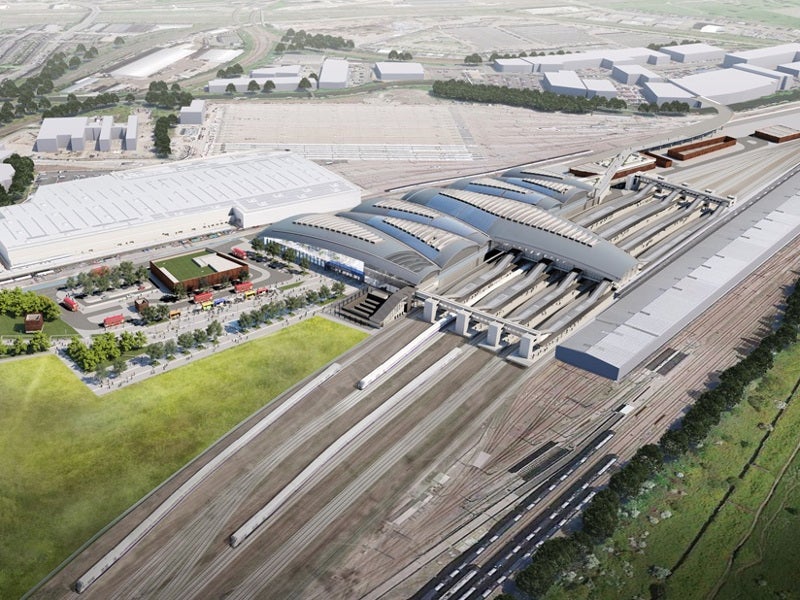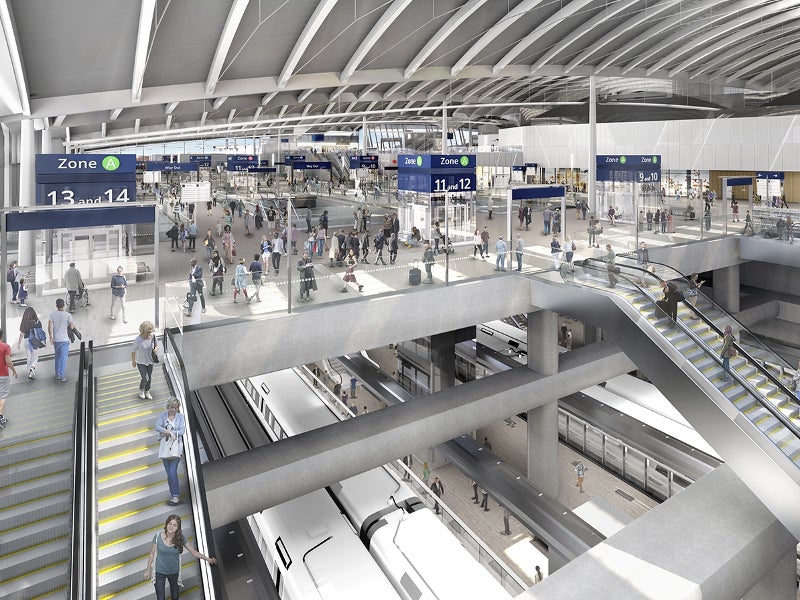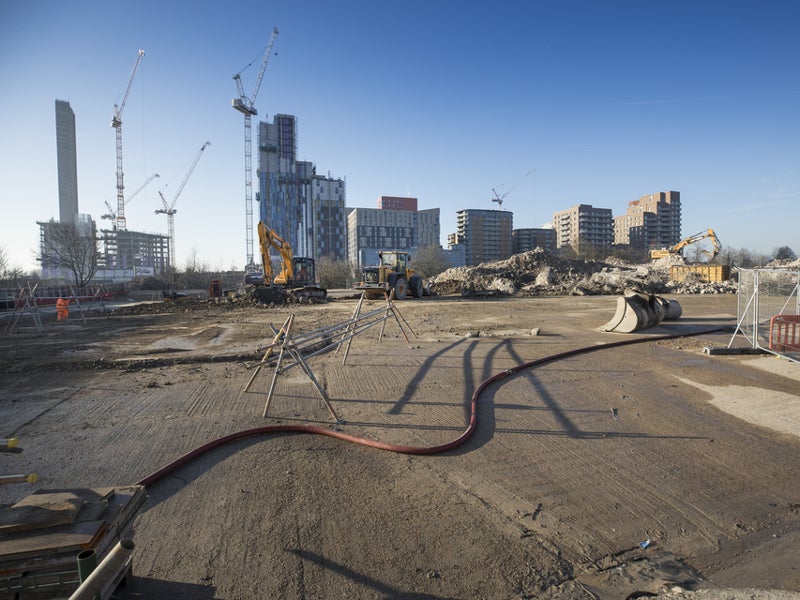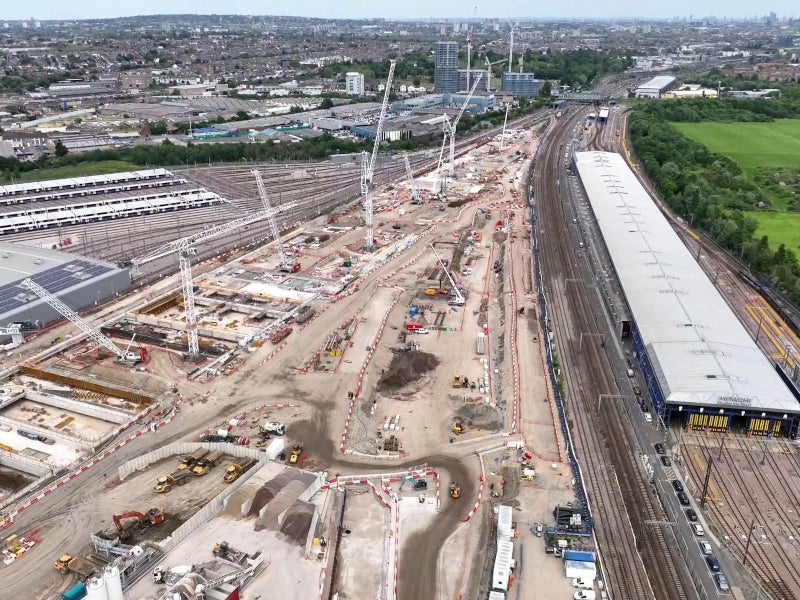Old Oak Common is a new railway hub being developed in London, UK, as the only station that will connect the new High Speed 2 (HS2) railway line with the Elizabeth line. It will be the biggest sub-surface station in the UK upon completion.
The station will be the site of the new HS2 and Great Western Main Line interchange station. It will become the 42nd stop on the Elizabeth Line, London’s newest transport link. It will link central London, the west of England, Wales, the West Midlands and the north of England, making it one of the best-connected sites in Europe.
The new railway station is part of one of the biggest regeneration projects being undertaken in the UK, expected to generate 65,000 jobs and create 25,000 homes. It is being undertaken by the HS2 joint venture with an estimated investment of £1bn ($1.24bn). Construction of the project commenced in November 2019.
The new station is expected to open between 2029 and 2033 and will handle 250,000 passengers per day. It is expected to reduce traffic congestion and travel time, as well as offer improved connectivity to three airports including London Heathrow, the UK’s busiest international airport.
Old Oak Common location details
Old Oak Common station is being developed in the Old Oak Common area between East Acton and Harlesden in London. It is being developed on the site of the former Old Oak Common railway depot, and brownfield land owned by the government.
Built in 1906, the Old Oak Common railway depot (the Great Western Railway (GWR) depot) was used to service and maintain trains operated by GWR. The depot was closed in December 2018 to make way for the development of Old Oak Common station.
Station design details
Old Oak Common station will be 1km long and extend 20m below ground level. 14 platforms will be constructed at the station. Six high-speed platforms of 420m length will be located underground within an 850m long station box, and an additional eight platforms of 240m length will cater to conventional rail services in West London.
The underground platforms will be linked to conventional rail services at ground level through a shared overbridge and escalators. A spacious concourse with a vaulted roof inspired by the heritage of the site will link both parts of the station.
The station will be designed for sustainable travel and include cycling facilities and electric vehicle charging points, which will constitute 16% of the parking provision.
The station’s design aims to minimise energy dependency during operation with an open-plan layout and an atrium for natural ventilation. Occupancy and daylight sensors will be installed, which will reduce the necessity for artificial lighting.
The station was awarded an Outstanding rating under the Building Research Establishment’s Environmental Assessment Method (BREEAM) assessment in August 2023.
Construction details
Construction works involve the excavation of the 850m-long underground station box that will house HS2’s high-speed platforms. The excavation works will remove 930,000m³ of London clay by the Old Oak Common spoil conveyor, which spares local roads from more than 63,500 lorries.
The station box construction is divided into three sections – west, central and east. The first base slab in the west section was laid in May 2023. Upon completion of the west box, tunnel works will commence between Old Oak Common and the Victoria Road Crossover Box. Tunnel breakthrough is expected to occur in late 2024.
The work on the conventional platforms will commence once the construction of the station box is completed in 2026. The foundations for the conventional platforms will include 1,600 concrete piles, of which more than 500 were installed in 2023.
Several utilities are also being diverted to allow for the construction of the new station.
Public space details
A new public parkland is planned to be developed to the west of the station, above the HS2 platforms. The park will feature pocket gardens, trees and shrubs, a viewing platform and the station plaza.
The park will offer seating options and include space for public art and visual installations, which will enhance and enliven the location.
The proposals also include a wetland common at the station’s forefront, envisaged as a biodiverse sanctuary and a welcoming space for all.
Contractors involved
Balfour Beatty VINCI SYSTRA HS2 (BBVS) joint venture (JV) is responsible for the construction of the Old Oak Common station. The contractors in the JV include Balfour Beatty Group, VINCI Construction UK, VINCI Construction Grands Projets and SYSTRA.
Work includes the construction, commissioning and final design of the Old Oak Common station.
Costain Skanska JV was appointed as the enabling works contractor. The JV subcontracted Erith and McGee to clear the site in preparation for construction.
WSP, a consulting company, and WilkinsonEyre, an architecture practice, were responsible for the design of the new station. Expedition, an engineering services provider, was appointed as a subconsultant to WSP.
Anthro, a JV between Egis and VVB Engineering, was awarded a contract by the BBVS JV to perform mechanical, electrical, public health, fire and communications systems works for the station.
Laing O’Rourke’s concrete frame and substructure specialist unit Expanded was appointed as one of the construction partners for the station.
Siemens Mobility, a transport solutions provider, won a contract to supply station building systems for all HS2 stations including Old Oak Common station in January 2024.
Card Geotechnics, a geotechnical and geoenvironmental consultancy, Soben, a construction consultancy, O’Rourke Contracting, a construction company, Bachy Soletanche, a geotechnics and foundation engineering specialist, and RWDI, a consulting company, are also involved in the Old Oak Common station project.








